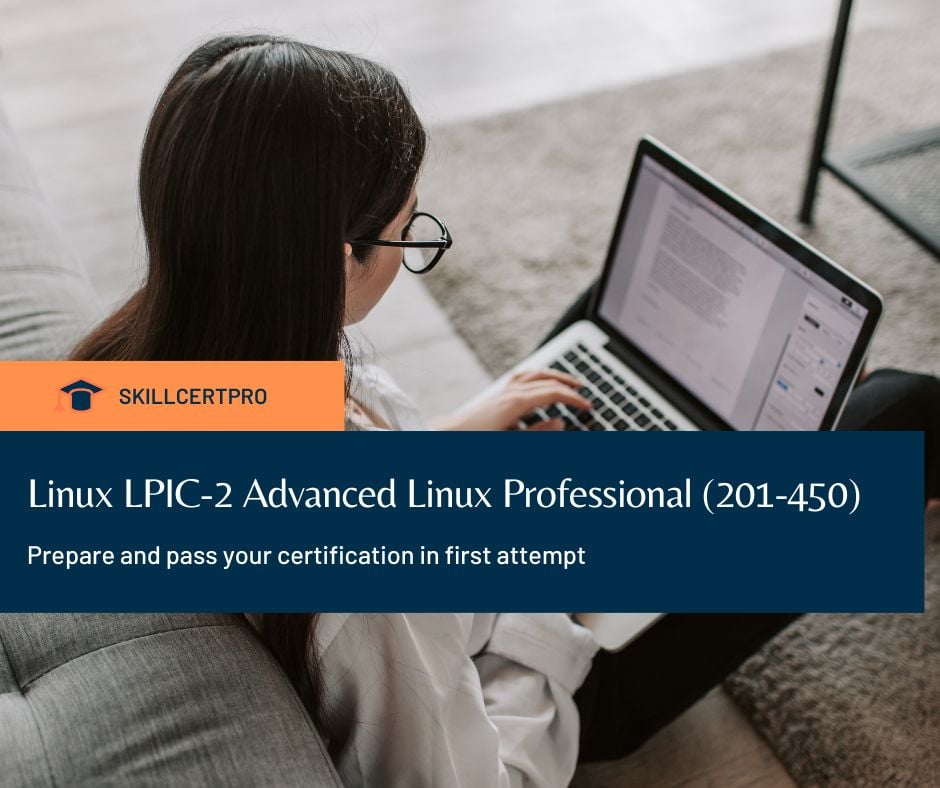Linux LPIC-2 (201-450) Exam Questions 2025
- We are offering 348 latest real Linux LPIC-2 (201-450) Exam Questions 2025 for practice, which will help you to score higher in your exam.
- Aim for above 85% or above in our mock exams before giving the main exam.
- Do review wrong & right answers and thoroughly go through explanations provided to each question which will help you understand the question.
- Weekly updates: We have a dedicated team updating our question bank on a regular basis, based on the feedback of students on what appeared on the actual exam, as well as through external benchmarking.
The LPIC-2 (201-450) exam is the first of two exams required to earn the LPIC-2 certification from the Linux Professional Institute. It focuses on advanced system administration topics such as kernel management, system startup, file systems, networking, and troubleshooting.
You must pass both Exam 201 (201-450) and Exam 202 (202-450) to earn the LPIC-2 credential. An active LPIC-1 certification is also required to receive the certificate.
Exam Format
| Feature | Details |
|---|---|
| Exam Code | 201-450 |
| Certification Level | LPIC-2 (Advanced Linux Professional) |
| Duration | 90 minutes |
| Number of Questions | Around 60 |
| Question Type | Multiple choice and fill-in-the-blank |
| Passing Score | 500 out of 800 |
| Languages | English, German, Japanese, Portuguese (Brazilian) |
| Exam Delivery | Pearson VUE test centers or online (OnVUE) |
| Validity | 5 years |
| Cost | Around USD 200 (varies by region) |
Exam Objectives (LPIC-2 201-450)
1. Capacity Planning
-
Measure and analyze system resource usage.
-
Predict future resource needs for CPU, memory, disk, and network.
-
Understand performance tuning and benchmarking tools.
2. Linux Kernel
-
Compile, install, and configure custom kernels.
-
Manage kernel modules and module dependencies.
-
Use tools like
lsmod,modprobe, anddepmod. -
Configure kernel parameters at runtime and persistently.
3. System Startup
-
Understand the boot process, GRUB configuration, and runlevels.
-
Manage systemd services and targets.
-
Troubleshoot boot failures and repair broken bootloaders.
4. Filesystems and Devices
-
Configure and manage partitions, file systems, and swap space.
-
Work with LVM, RAID, and quotas.
-
Troubleshoot file system issues and perform routine maintenance.
5. Advanced Storage Administration
-
Configure iSCSI initiator and targets.
-
Use
multipathfor redundant storage connections. -
Manage and secure storage volumes and snapshots.
6. Networking Configuration
-
Configure basic and advanced network interfaces.
-
Set up static and dynamic routing.
-
Manage network bonding, bridging, and VLANs.
-
Troubleshoot connectivity and DNS resolution issues.
7. System Maintenance
-
Create and manage backups and restores.
-
Use system logging and monitoring tools.
-
Manage jobs and schedule tasks with
cronandat. -
Identify and fix performance bottlenecks.
Preparation Tips
-
Get hands-on experience with real or virtual Linux systems.
-
Study the official LPIC-2 201-450 objectives and practice each topic.
-
Use labs to experiment with kernel compilation, boot repair, and network setup.
-
Take mock exams to evaluate your readiness and timing.
-
Review log files and troubleshooting steps regularly to improve efficiency.
Refer Skillcertpro FAQ if you have any doubts: https://skillcertpro.com/faq/










Reviews
There are no reviews yet.